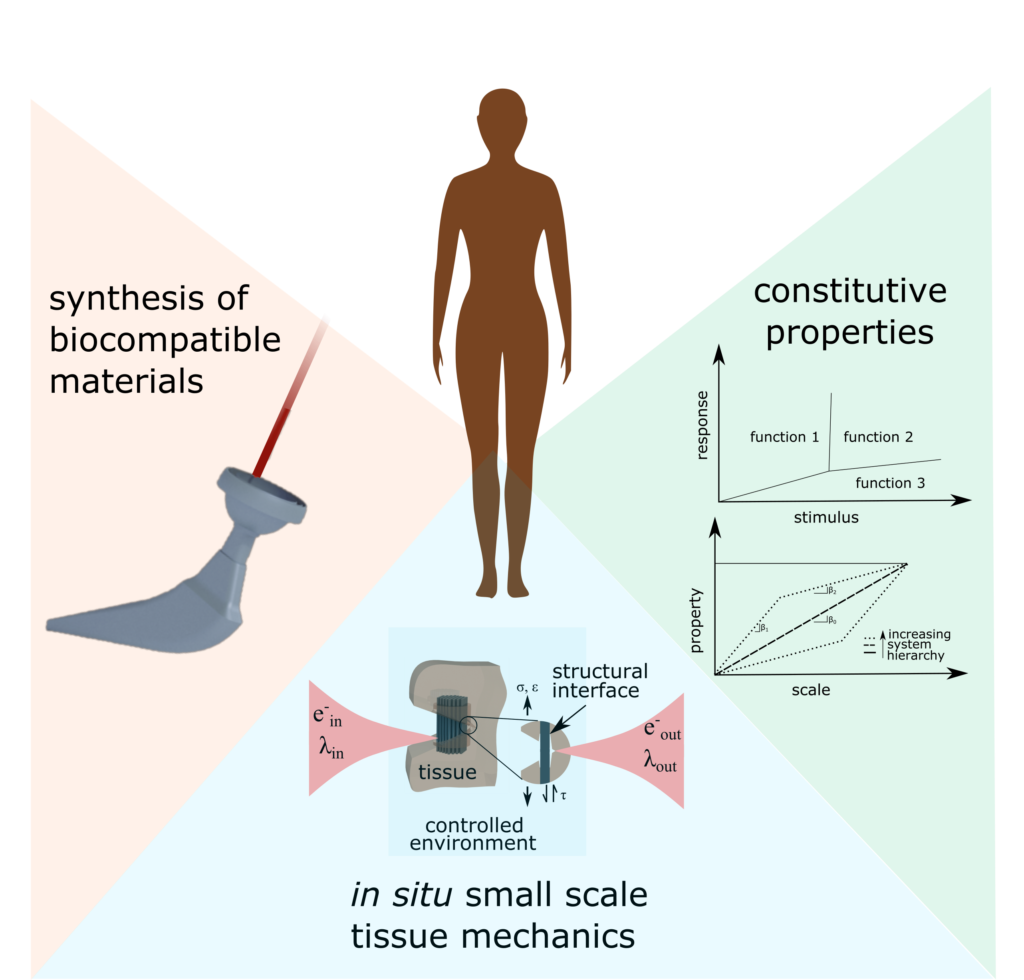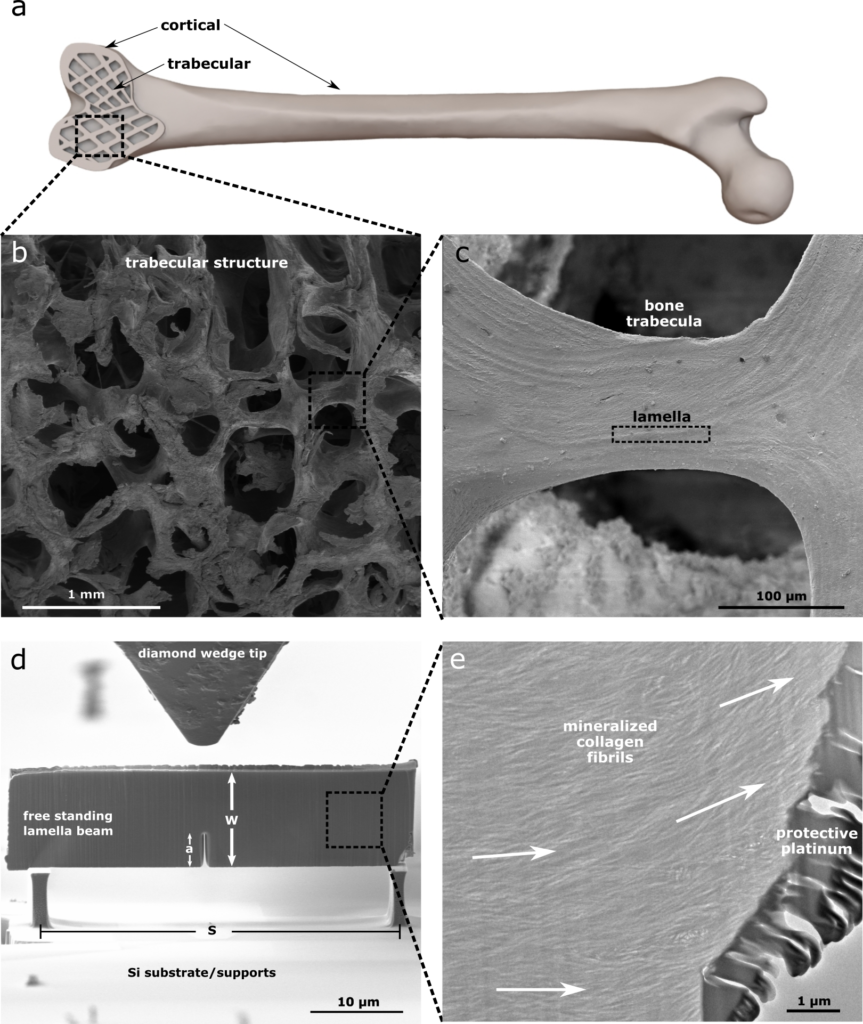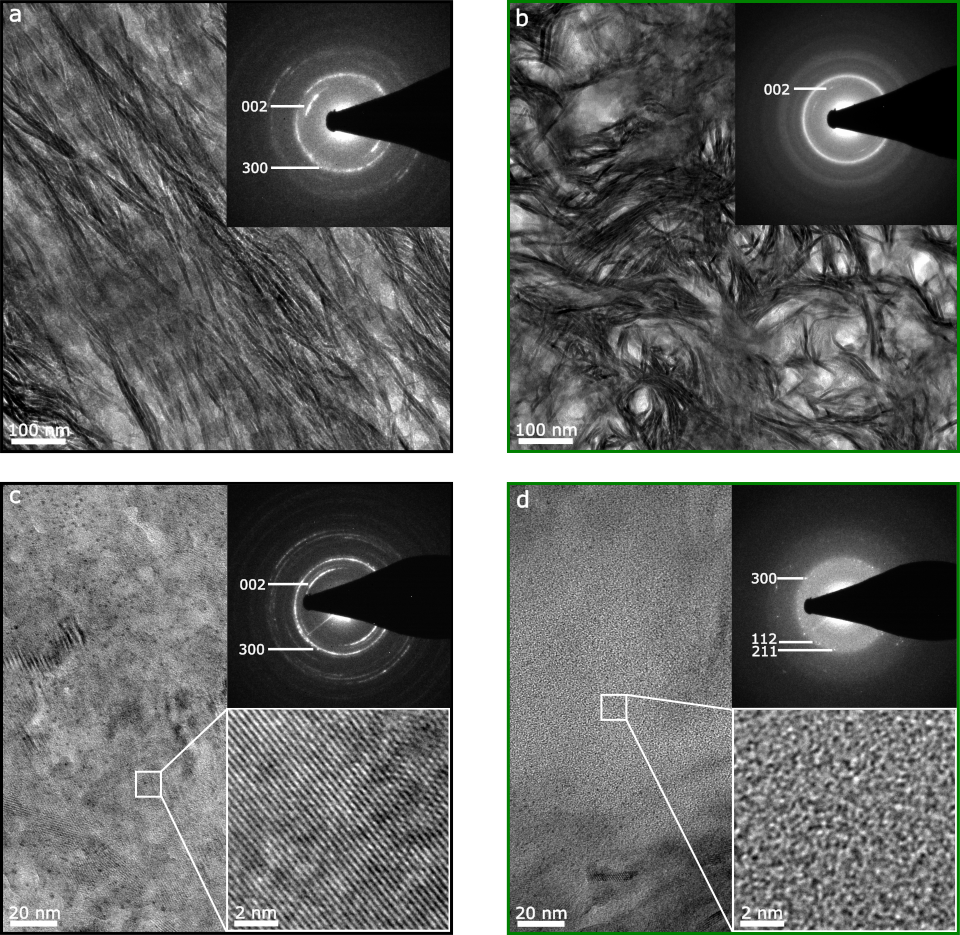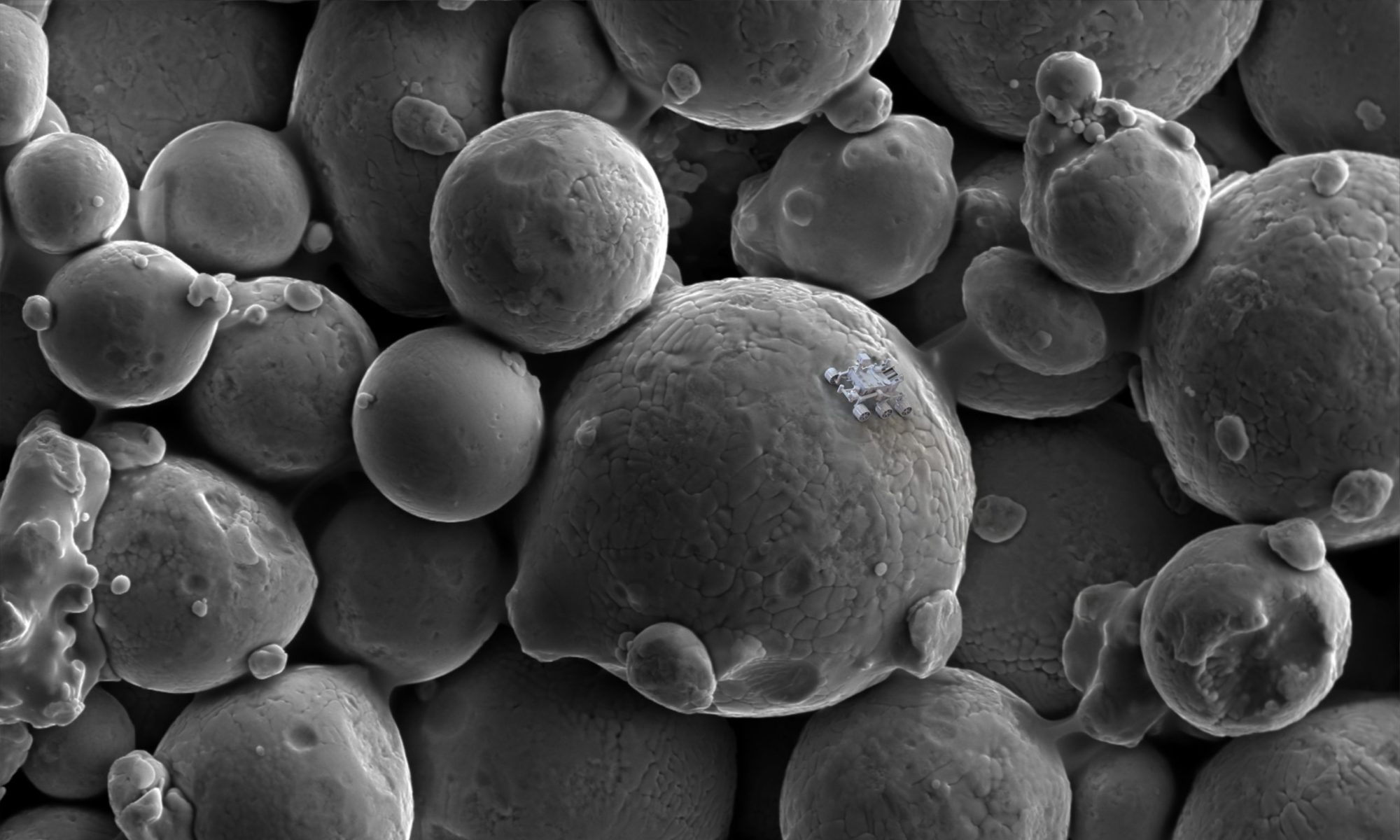Research Overview

Our group leverages novel nano and micro scale experimental mechanics to develop a fundamental understanding of tissue mechanical response to physiological loads. We couple this with the emerging field of metal additive manufacturing to develop materials that enable seamless and active interfacing with the human body for regenerative health care.
Research Areas
Bone is a hierarchically arranged composite that has intrigued scientists for decades. Part of the reason why it has been challenging to fully understand the structure and properties of bone is because of its multi-scale nature: components range in size from some nanometers to microns to millimeters and centimeters. Understanding how the multi-scale components work in concert to provide bone with exceptional mechanical properties has been very challenging. Here we showed in situ microscale fracture experiments reveal nanofibril toughening in human bone leads to unique hierarchical toughening.


Using transmission electron microscopy, we identified 100–300 nm amorphous calcium phosphate in trabecular bone. This amorphous mineral may serve as the precursor to crystalline bioapatite during biomineralization. Nanomechanical experiments on cylindrical samples, with diameters between 25 0nm and 3,000 nm, of the bone’s ordered and disordered phases revealed a transition from plastic deformation to brittle failure and at least a factor-of-2 higher strength in the smaller samples.
Selective laser melting (SLM) is a metal additive manufacturing technique that employs a scanning laser to melt a bed of metal powders, enabling layer-by-layer metal 3D printing. We are developing novel techniques to print new materials using nanoscale modification of powder stock. Here we show printing of dense copper structures.
